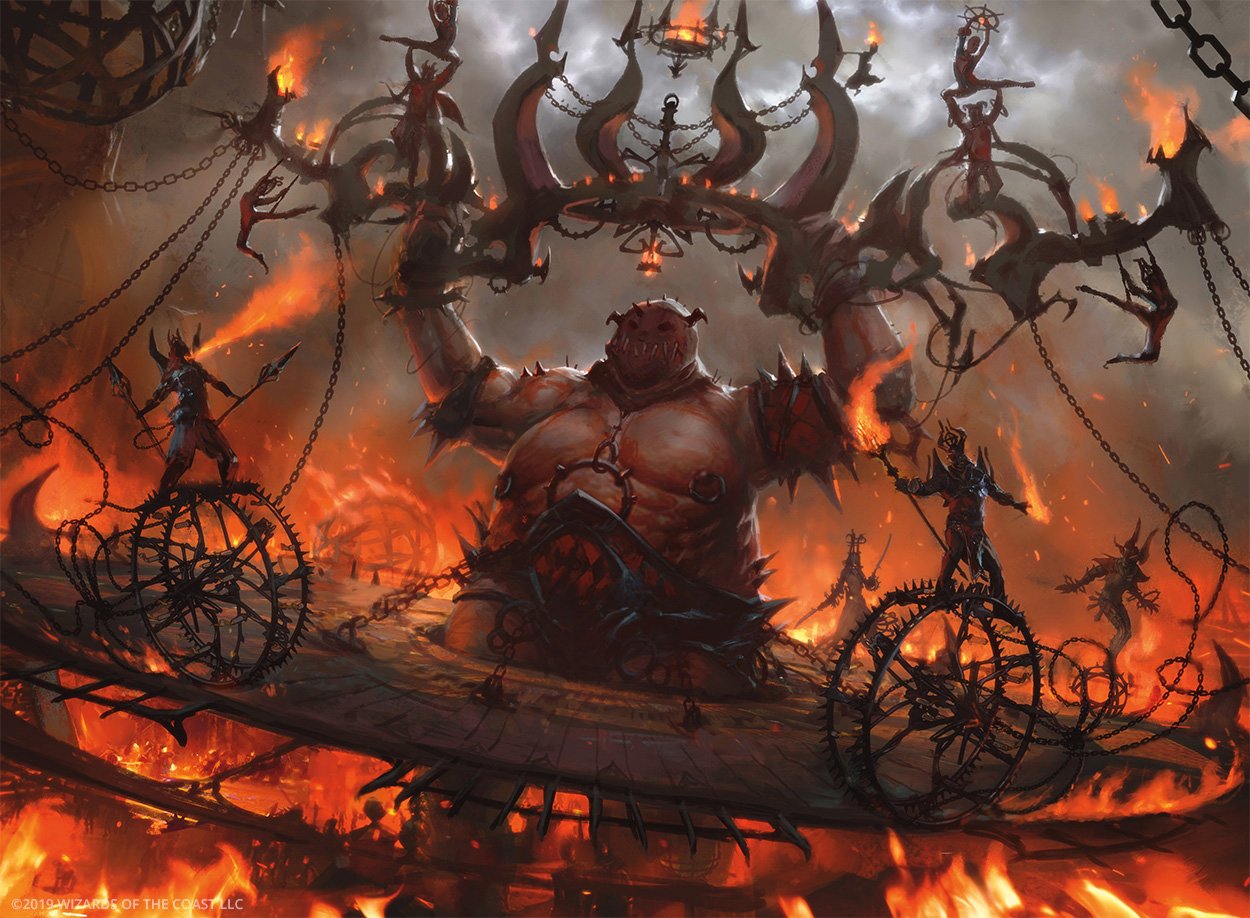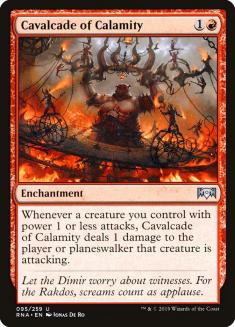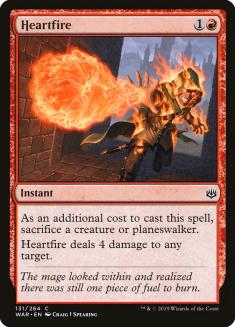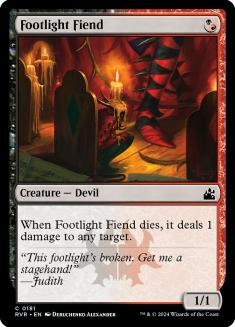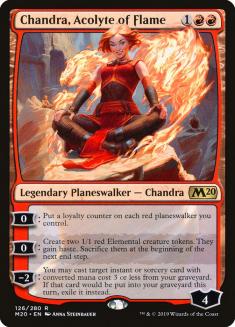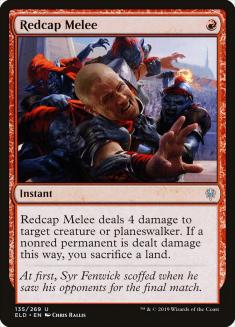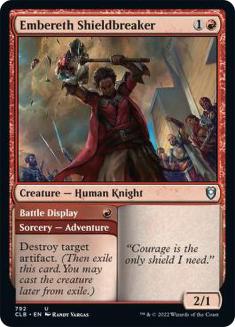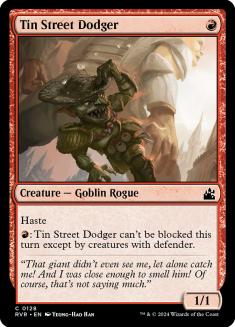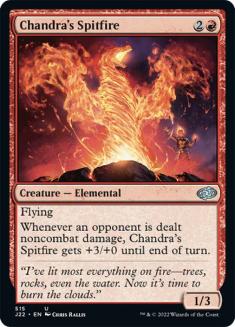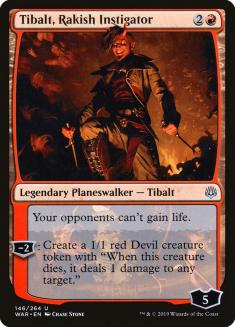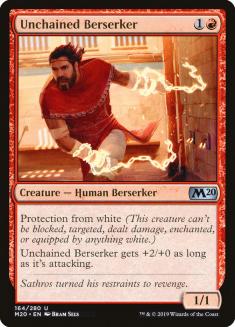I’m going to begin my article this week with a disclaimer:
I’m far better at tuning Magic decks than creating them from scratch.
As I result, most lists I present to you are finely tuned killing machines that I made after endlessly debating every slot and playing a significant number of games. The deck I have you today is a work in progress. I think it has the potential to be the best deck in Theros Beyond Death Standard, but it isn’t quite there yet.
The story of this deck begins with my close friend Max McVety. As you may or may not be aware, Max is somewhat obsessed with Mono-Red decks, and has spent the weeks leading up to Grand Prix Detroit trying many variants. The problem is that Mono-Red decks are very poorly positioned right now. Mono-Red is 45% against Temur Adventures, 45% against Azorius Control, and 40% against Jeskai Fires. Mono-Red is a small favorite against Bant Ramp, but even that matchup is easy to lose.
The reasons Mono-Red struggles to win is that Standard decks these days are twofold. First, most decks have a primary plan that goes over the top of Mono-Red’s and have enough early defense to stay alive. Second, Mono-Red’s only form of reach, Embercleave, is handled well by Aether Gust, a card which most people have in their maindecks. In other words, Mono-Red Aggro typically gets ahead, but then loses to a superior late-game when Embercleave inevitably fails.
In order to solve these problems, Mono-Red needs to both present a fundamentally more powerful gameplan and have enough reach to win the game through an Aether Gust once ahead. Enter Cavalcade of Calamity.
Cavalcade of Calamity gives Mono-Red the ability to win games in which it has no remotely profitable attack. Additionally, it synergizes with Torbran, Thane of Red Fell; Chandra, Acolyte of Flame; and Chandra’s Spitfire to deal large amounts of damage very quickly. It doesn’t matter how many creatures your Temur Adventures opponent has or how many cards they draw – if you assemble Torbran, Cavalcade, and a couple of one-drops, they’re just going to die.
These cards are individually weaker than normal Mono-Red’s cards, but they together do more than those cards ever could. In order to make Cavalcade of Calamity good, we have to play a large number of one-drops. Scorch Spitter and Fervent Champion remain from traditional Mono-Red decks, and Tin Street Dodger joins in due to its synergy with the enchantment. Past those, Grim Initiate stands out mainly because you can chump-attack with it twice to generate Cavalcade triggers.
Once we’re playing Chandra and Grim Initiate, Heartfire has enough fuel to be appealing. Between casting it, flashing it back with Chandra, and Cavalcade triggers, our deck has a ton of reach and can end the game out of nowhere. This brings me to the core of the deck:
Creatures (19)
Planeswalkers (3)
Lands (21)
Spells (12)

The list above is 55 cards. Considerations for the remaining slots include the fourth copy of the two legends, some number of Chandra’s Spitfire, the 22nd land, and additional one-drops to maximize Cavalcade. Chandra’s Spitfire does not make the core deck due to being vulnerable to Aether Gust and Teferi, but it’s a consideration due to how good it is against Jund Sacrifice and because sometimes they just will not have it.
I lack confidence about the exact configuration of these slots, and it’s subject to change over the next few days. At the moment, I think playing the fourth Torbran demands playing the 22nd land, and isn’t worth paying that price. Torbran does die sometimes, but he’s bounced or Gusted more often. That means drawing two isn’t incredibly valuable.
I don’t love Chandra’s Spitfire and I sideboard it out a lot, but I currently favor two in the maindeck. People have fewer answers for it in Game 1, and it can lead to some truly impressive turns. If you believe this card requires more justification, please see the screenshot below.
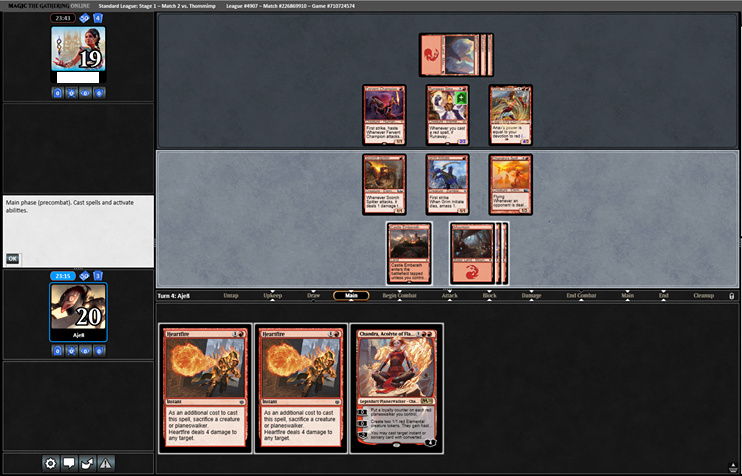
That leaves two Footlight Fiends and the fourth Chandra as the last few cards in the deck. The reason I like four copies of Chandra is not so much that I want to draw two, as that I desperately want to draw one. Chandra is the glue that holds the deck together: she works well with the Cavalcade part of the deck and the Heartfire part of the deck. You really do not want to draw a hand consisting of Torbran, Heartfire, and Cavalcade, but there’s no combination of cards that makes Chandra bad. That leaves us with the following list:
Creatures (23)
- 2 Chandra's Spitfire
- 2 Footlight Fiend
- 4 Tin Street Dodger
- 4 Grim Initiate
- 4 Scorch Spitter
- 4 Fervent Champion
- 3 Torbran, Thane of Red Fell
Planeswalkers (4)
Lands (21)
Spells (12)

Sideboarding
In most matchups, it’s important to not over-sideboard with this deck. You need a critical mass of one-drops to be functional and most of your power cards cannot easily be upgraded. The minimum number of one-drops I ever have for Game(s) 2 and 3 is fourteen, and I prefer fifteen or more most of the time. That sad, I often cut a few due to the grindier nature of those games.
Because this deck has so many bad creatures and so much reach, Heartfire is always better than other removal. If you need more than four kill spells, it’s okay to bring in a few, but not at the expense of Heartfire. Additionally, I never cut below three copies of Chandra or four copies of Light Up the Stage against anything. They are simply too good in this deck.
VS Jund Sacrifice
Out:
In:
This matchup is all about Mayhem Devil. That card is capable of machine-gunning down your team and Chandra’s tokens trigger it. As a result, I sideboard up to six answers for it, and do my best never to point one at anything else. This deck deals damage in large enough chunks that I am not that afraid of their incidental life gain.
VS Azorius Control
Out:
In:
Against Azorius Control, your goal in life is to resolve Chandra. If she’s on the battlefield, you will be able to punish Shatter the Sky heavily and nothing short of a Dream Trawler will beat you. It’s minor but be aware that Chandra can add a loyalty counter to both itself and Tibalt in a pinch. This can sometimes let Tibalt survive a Dream Trawler hit, and can win games where you’re otherwise hysterically dead.
VS Temur Adventures
Out:
In:
This matchup is pretty straightforward. Play around what you can, jam into what you can’t, and don’t forget that you can use Heartfire combined with a first strike creature or Footlight Fiend to kill a Lovestruck Beast.
VS Mono-Red Aggro
Out:
In:
The one matchup where the deck radically changes is the mirror. In that matchup, Heartfire is not worthwhile, and Chandra’s Spitfire gets much worse against a pile of Redcap Melees. Since the deck barely uses its sideboard, I have chosen to include eight cards almost solely for the mirror. I don’t have much to say about the actual games; just don’t lose to Embercleave and remember that you are usually the beatdown.
Mulliganing
When assessing hands with Mono-Red Cavalcade, be aware that because the deck has so many more one-drop creatures than payoffs, it is sometimes right to keep a one-drop-less hand. You have so many that you’re quite likely to draw one on any given draw step, and thus if your hand is otherwise excellent I generally keep. Additionally, I keep one-land hands with Light Up the Stage and multiple one-drops more often than not. This deck is literally designed to convert a pile of one-mana creatures into a game win.
Piloting Mono-Red Cavalcade
The most important fact to know about Mono-Red Cavalcade is that you should often refuse to trade creatures. If you control a Scorch Spitter and your opponent has a Human token, you should usually not attack. Later in the game, that Scorch Spitter might be worth more than one damage due to Cavalcade and Torbran.
When you draw Light Up the Stage in this deck, it often makes sense to cast it on Turn 2 without casting a one-drop first. I’m not saying you should do this over casting Cavalcade or two one-drops, but I think it is usually right when you do not have either of those things. The reason for this is that the curve of Mono-Red Cavalcade is concentrated at three and one. Thus, when you cast Light Up the Stage on two in this way, you play around hitting a one-drop and a three-drop. Only hitting two expensive cards or Torbran punishes you and I think this often makes your draw enough better that it’s worth that risk.
As I mentioned above, Chandra, Acolyte of Flame is the linchpin of this deck. When you have a Chandra at three loyalty or more, you can flash back Heartfire and sacrifice the Chandra. This often comes up because your opponent is low from the first Heartfire but you’re low on resources. I have also won long games on occasion by using Chandra to flashback Light Up the Stage. You’re allowed to pay the spectacle cost when you flash it back in this way, although I think Magic Online is bugged at the moment and does not allow this.
Detroit Rock City
I will end this article by saying that Mono-Red Cavalcade is a deck both Max and I are seriously considering for MagicFest Detroit this weekend. It might be a little too unrefined at the moment, but I am fairly sure it is better than stock Mono-Red Aggro. With a little more hard work, this might just be a top-tier Theros Beyond Death Standard deck.

